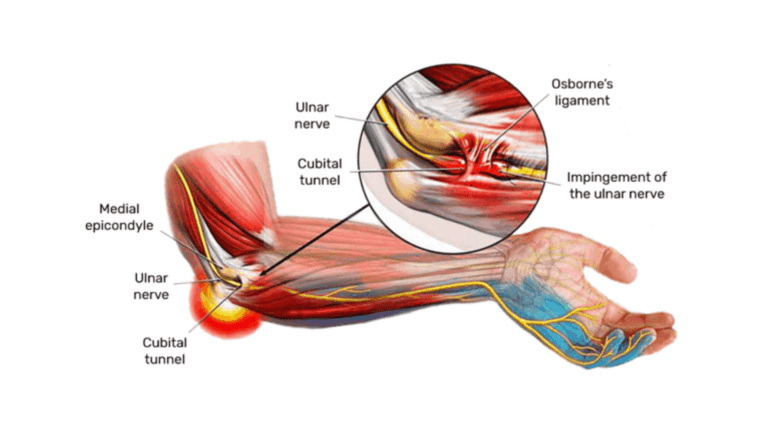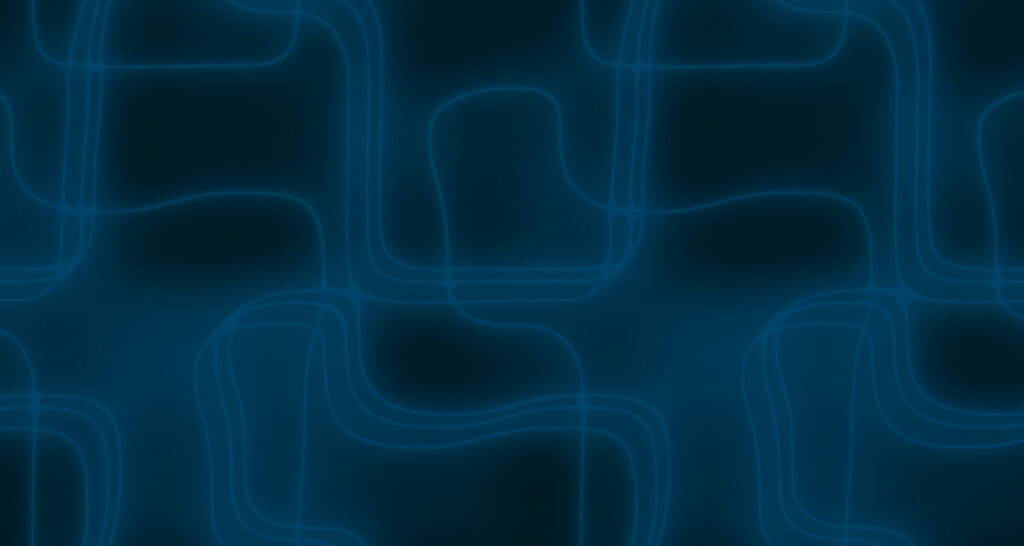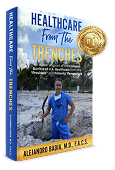
What is it?
Cubital tunnel syndrome is a condition brought on by increased pressure on the ulnar nerve at the elbow. There is a bump of bone on the inner portion of the elbow (medial epicondyle) under which the ulnar nerve passes. This site is commonly called the “funny bone”. At this site, the ulnar nerve lies directly next to the bone and is susceptible to pressure. When the pressure on the nerve becomes great enough to disturb the way the nerve works, then numbness, tingling, and pain may be felt in the elbow, forearm, hand, and/or fingers.
Symptoms
- Pain
- Numbness
- Tingling
The numbness or tingling most often occurs in the ring and small fingers. The symptoms are usually felt when there is pressure on the ulnar nerve, such as when sitting with the elbow on an arm rest, or with repetitive elbow bending and straightening. Often symptoms will be felt when the elbow is held in a bent position for a period of time, such as when holding the phone, or while sleeping. Some patients may notice weakness while pinching, occasional clumsiness, and/or a tendency to drop things. In severe cases, sensation may be lost and the muscles in the hand may lose bulk and strength.
Diagnosis yet misunderstood medical condition
The diagnosis of cubital tunnel syndrome can be made based on simple clinical tests and patient symptoms, and is confirmed by a detailed nerve conduction study. This study measures the velocity and the latency of the nerve impulses across the ulnar nerve at the elbow.
Nonsurgical Treatment yet misunderstood medical condition
Symptoms may sometimes be relived without surgery, particularly if the nerve conduction study shows that the pressure on the nerve is minimal. Changing the patterns of elbow use may significantly reduce the pressure on the nerve. Avoiding putting your elbow on hard surfaces may help, or wearing an elbow pad over the ulnar nerve may help. Keeping the elbow straight at night with a splint may also help.
Surgical Treatment yet misunderstood medical condition
When symptoms are severe or do not improve with conservative treatment, surgery may be needed to relieve the pressure on the nerve. Many surgeons will recommend shifting the nerve to the front of the elbow, which relieves pressure and tension on the nerve. Some surgeons may recommend trimming the bony bump on the inside of the elbow (medial epicondyle). At Badia Hand to Shoulder Center, a newer endoscopic method is used, which does not require a large incision or lengthy recover time. A small incision is made at the inside of the elbow, and an endoscope, which is a tiny camera, is inserted. This allows the surgeon to see the nerve and make a division over the nerve. This reduces the compression over the ulnar nerve that had been causing the symptoms.







